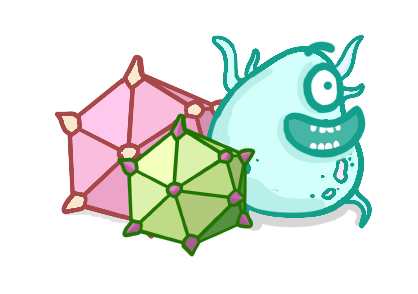Communicable Disease 1 - Introduction
This lesson covers:
- What 'pathogens' are
- How communicable diseases can spread
- How to reduce the spread of communicable disease
Which of the following are considered microorganisms?
(Select all that apply)
Viruses
Fungi
Protists (also known as protoctists)
Plants
Bacteria
Ants
|

What is a pathogen?
Any organism that causes disease
Any factor that increases the risk of disease
A microorganism that can cause disease
|
Pathogens are microorganisms that can cause disease.
Are these diseases classed as communicable or non-communicable diseases?
Communicable diseases
Non-communicable diseases
|

Can pathogens can infect both animals and plants?
Yes
No
|
Four main ways that pathogens can spread
water / air / sneeze / contact / contaminated
- Through the - Diseases such as influenza and measles can spread via tiny droplets of saliva that we expel when we cough or .
- Contaminated - Diseases such as cholera can spread through water sources contaminated by the diarrhoea of infected people.
- food - Diseases such as salmonella are spread by eating food which has been infected with salmonella, and then not cooked properly.
- Direct - Athlete's foot is spread by walking barefoot on surfaces contaminated with the fungi.
|
Give three ways we can reduce the spread of infectious disease.
|